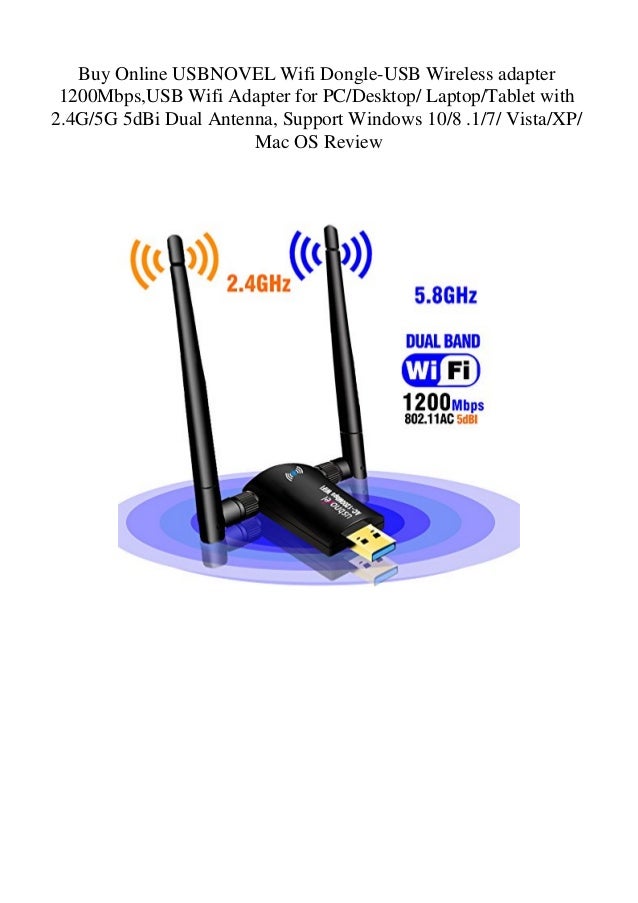Wifi Wireless Adapter For Mac
Connect to Wi-Fi
You can use the Wi-Fi menu to quickly connect to a nearby wireless network.

- 'mac wireless adapter'. Categories & Filters. Store Pickup at. Wi-Fi & Networking. TP-Link TP-Link. J5create j5create. Data Encryption Data Encryption. Attached Antenna Attached Antenna.
- Buy EDUP WiFi Adapter for Gaming 1300Mbps, USB 3.0 Wireless Adapter Dual Band 5GHz 802.11 AC WiFi Dongle 5dBi Antenna Support Desktop Laptop Windows XP/Vista/7/8/10 Mac 10.6-10.15 with fast shipping and top-rated customer service. Newegg shopping upgraded ™.
NETGEAR A6150-100PAS Wi-Fi USB Adapter - AC1200 Dual Band. Wireless Data Rates: Up to 1.2Gbps Standards: IEEE 802.11 b/g/n 2.4 GHz IEEE 802.11 a/n/ac 5.0 GHz System Requirements: Windows OS or Mac OS computer USB 1.1 / USB 2.0 compatible Microsoft Windows 7, 8, 10: (32 / 64-bit) Mac OS 10.910.13 Features: Dual Band Wi-Fi Speed up to 1200 Mbps - 300 / 867 Mbps Works with 802.11. This package version includes fixes for random installation errors of the Windows® 10 Wi-Fi Drivers for Intel® Wireless Adapters when using specific platform configurations and the End User installer package version 21.110 or 21.120.1 (exe installation package).
- Click the Wi-Fi icon ( or ) in the menu bar.
- If Wi-Fi is off, choose 'Turn Wi-Fi on.'
- Select a nearby Wi-Fi network from the list.
Usb Wireless Adapter For Mac

If you don't see your network listed, make sure it's nearby and that others can connect to it. It could also be a 'hidden' network. You can connect to a hidden network by choosing 'Join other network' and entering the name of the network you're trying to use.
The strength of each nearby network is shown next to its name. More darkened bars indicate a stronger network connection.
Enter your password
Networks that have a lock icon next to their name require a password. After you select your network, enter the network password when you're prompted. If you don't know the network password, check with the owner of the Wi-Fi network you're trying to join.
Usb Wifi For Mac
Use a cellular device as your Wi-Fi connection
Depending on your cellular plan, your iPhone or iPad with cellular can share its Internet connection with your Mac. When your iOS device is configured properly and is near your Mac, it appears in the Wi-Fi menu as an available connection.

When you select a cellular device as your Internet connection, the menu icon changes to indicate your Mac is currently linked to the device ( ).
Turn Wi-Fi on or off
If you're in an environment where Wi-Fi isn't permitted (like on some airline flights) you can quickly turn off Wi-Fi from this menu.
- Click the Wi-Fi icon in the menu bar.
- Choose 'Turn Wi-Fi off.'
When Wi-Fi is turned off, the menu icon changes to and empty indicator ( ). When you're ready to use Wi-Fi again, click the menu icon and choose 'Turn Wi-Fi on.' Then connect to the network you want to join if your Mac doesn't join it automatically.
If you don't see the Wi-Fi menu
You can enable and disable the Wi-Fi menu from the Network pane of System Preferences.
- From the Apple menu, choose System Preferences.
- Click Network in the System Preferences window.
- Select Wi-Fi in the list of available network connections.
- Select (check) the option to 'Show Wi-Fi status in menu bar.'
Create a network
If you want to create a temporary Wi-Fi connection between your Mac and another device, you can create your own network from the Wi-Fi menu.
- Click the Wi-Fi menu and choose Create Network.
- Enter the details for your network, such as a network name and channel
When you create a computer-to-computer network, the menu icon changes to show a computer (). When you're done, click the Wi-Fi menu again and choose Disconnect to close the network you created.
